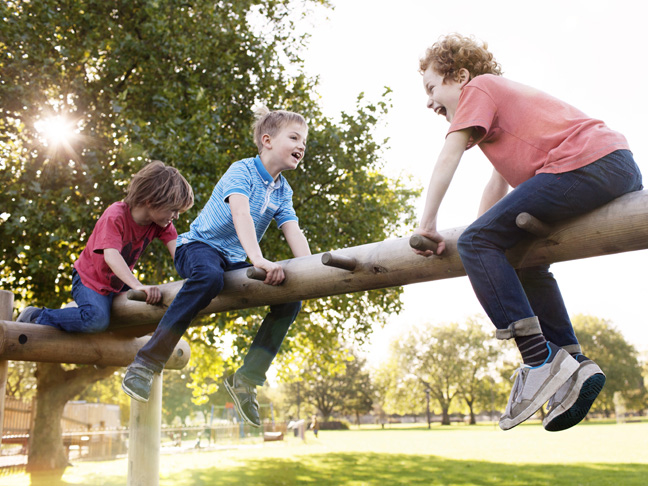I knew this little girl to be social, friendly, and funny. She was a joiner — the kind of kid who likes to be surrounded by other kids. As it turned out, her attempts to join were often met with rejection because of the way she approached other kids. While her teachers praised her for her outgoing nature, she never really learned how to enter a new group. Consequently, her go-to strategy was to run up to a child (or group of children) and yell, “Hi! Let’s be friends!” While this worked with some children, it overwhelmed others.
Her mom felt heartbroken every time it happened. I can understand. My daughter is the kind of kid who is overwhelmed by the super outgoing kids. Although she wouldn’t reject a child for such an interaction, she might freeze up and remain silent. That’s a common reaction when young children don’t know how to respond. Social interaction skills work both ways.
All kids have their own unique personalities and they all interact in different ways. Some young children genuinely prefer solitary play (even at the park) while others can’t think of a thing to do unless they have a playmate. Regardless of how they choose to interact, all kids need to learn how to enter and leave a group. Kids don’t come into this world oozing social interaction skills, they learn those skills along the way. More often than not, they need adult guidance. They need a blueprint to get started before we send them into a park full of new faces.
With a little bit of practice at home, kids can learn how to make new friends out in the community. Before your next outing to the local park, try a few of these strategies with your little social butterflies:
1. Take in the scene with your child. Kids can learn a lot about joining other kids at play simply by watching groups at play. Instead of pushing your kid into the park and telling her to find a playmate, take some time to hang back with her and watch the action first. When you observe the play around you, you can determine which kids seem to prefer quiet play, which kids appear to enjoy large groups, and which kids want to play alone. You know what kind of play appeals to your child and you can help her learn to find appropriate matches by watching and making observations. Comment on the play and ask your child what seems like the most fun.
2. Practice reading non-verbal cues. People give a lot of non-verbal cues with their body language and actions, but other people don’t always pick up on those cues. Truthfully, reading non-verbal cues can even be tricky for adults. It’s a good idea to practice understanding them early. You can begin to work on this when you observe the other kids at play. What do their facial expressions look like when other kids try to join? Do some kids seem to walk away from the larger group or turn around when other kids approach? Which kids appear to welcome new players to the group? You can also practice at home. Play a round of charades but use emotions as the clues. You might, for example, use “a boy wants to play alone” as a clue and act out what that would look like.
3. Role play sliding in and out of groups. Sliding in and out is a surprisingly difficult skill to master. Ever enter a cocktail party and freeze up at the sheer amount of people there? Some kids feel like that every time they enter unfamiliar territory. It’s hard to find a “friend” in a sea of strangers. It takes time to open up and find the right match. The great thing about role play is that you can use it anywhere. Come up with specific phrases that your child can use to enter a group at play — such as “Hi, what are you guys playing?” — and practice joining a group by observing first and then sliding in when the time is right. It’s also important to learn how to leave a group. Practice ending phrases — such as, “My mom says it’s time to go, see you next time!” — so that your child knows how to slide out when it’s time to move on.
4. Set a friendly example for your child. While it might seem like kids will struggle to gain independence if parents help them with every little thing, social skills are best learned through observation. Reviewing social skills as much as possible throughout the week, as well as modeling friendly behavior by greeting other parents at the park, can help your child learn to enter the playground action easily.
5. Help your child find the group that looks like a good match. (Base your decision on the observations you made earlier.) Walk him over to the other children, say hello, make a plan for where you will be, and then back away. Be sure your child knows that he can come to you for help when he needs it.
6. Review how the day went. Teach your child to review her day of play so that she can figure out what works and what doesn’t. Did she find a group to join? What did she say to join that group? Did she help new players join the group as the kids played? Did any obstacles arise? How did she help problem-solve?
When kids learn to review their social interactions, they feel more in confident in their ability to make new friends. We all make mistakes at times, and it’s important to communicate that to our kids. Some friendships will work and others won’t, but we can keep learning and growing as we work toward improving our own social interaction skills. That will help your child learn to make new friends easily.
Photo: Getty
